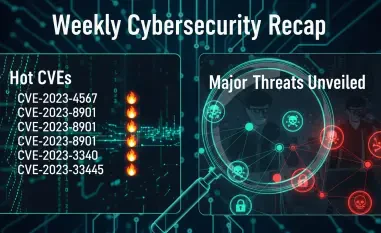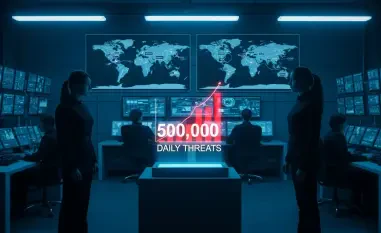In the ever-evolving landscape of cybersecurity, few threats are as insidious as advanced persistent threat (APT) groups that exploit trusted tools for long-term access. Today, we’re diving deep into a groundbreaking case with Malik Haidar, a seasoned cybersecurity expert with years of experience tackling sophisticated attacks in multinational corporations. With a sharp focus on analytics, intelligence, and integrating business perspectives into security strategies, Malik offers unparalleled insight into a recent campaign by the Flax Typhoon APT group. This interview explores how these likely state-sponsored hackers turned a widely used application, ArcGIS, into a persistent backdoor, the novel techniques they employed, and the critical lessons organizations must learn to protect themselves.
Can you give us an overview of the Flax Typhoon APT group and what makes them such a formidable threat?
Flax Typhoon is a sophisticated APT group, likely backed by state resources, known for their highly targeted and impactful attacks. They often focus on organizations with strategic importance, particularly in regions like Taiwan, where geopolitical tensions can play a role. Their operations are marked by precision—they don’t just spray and pray; they carefully select targets where a breach can cause significant disruption or provide valuable intelligence. This precision, combined with their ability to stay under the radar for extended periods, makes them a serious threat to critical infrastructure and sensitive data.
How did these hackers manage to weaponize a trusted tool like ArcGIS for their malicious goals?
ArcGIS, a geographic information system tool used for managing spatial data, is a trusted application in many organizations, often tied to critical functions like disaster recovery. The hackers exploited this trust by targeting a public-facing ArcGIS server and modifying a specific component called the Java server object extension, or SOE. They turned this extension into a web shell, essentially creating a backdoor that allowed them to execute commands remotely while blending in with legitimate system activity. It’s a clever abuse of a component most wouldn’t think to scrutinize.
Why was targeting a public-facing ArcGIS server with a connection to a private internal server such a strategic move for the attackers?
Choosing a public-facing server connected to a private internal one was a brilliant tactic for concealment and access. The public server acts as an entry point that’s often less scrutinized for internal threats, while its connection to the backend server provided a direct pipeline to deeper, more sensitive parts of the network. This setup allowed the attackers to mask their activities as normal traffic between the servers, making it incredibly hard for security teams to spot anything unusual without deep inspection.
Can you walk us through the key steps the hackers took once they gained access to the ArcGIS system?
Once inside, they followed a methodical approach. First, they compromised a portal administrator account, which gave them high-level privileges to manipulate the system. Then, they deployed their malicious SOE as a web shell, using standard ArcGIS extensions to activate it. They sent specific web requests with encoded payloads to trigger commands on the internal server via the public portal. To secure their access, they embedded a hardcoded key in these requests, ensuring only they could control the backdoor. It was a multi-layered strategy designed for both stealth and persistence.
What role did the renamed SoftEther VPN executable play in their attack, and why was it so effective?
After establishing their foothold, they uploaded a renamed SoftEther VPN executable, a legitimate tool repurposed for malicious use. This allowed them to create a tunnel that made their traffic appear as if it originated from within the internal network. By blending in, they bypassed many network-level monitoring tools, enabling lateral movement across the network and data exfiltration without raising red flags. It’s a stark reminder of how attackers can abuse legitimate software to look like just another part of the environment.
Why was it so significant that the malicious web shell ended up in the victim’s backups?
Storing the malicious SOE in the victim’s backups was a masterstroke for persistence. Even if the organization detected the intrusion and patched or cleaned the primary system, restoring from a backup would unknowingly reintroduce the backdoor. This tactic ensures long-term access, as backups are rarely checked for malicious content during recovery processes. It highlights a critical blind spot—organizations must treat backups as potential risks and include them in their security audits.
This attack has been described as a wake-up call for organizations. What broader lessons should businesses take away from this incident?
Absolutely, it’s a stark reminder that no tool, no matter how trusted or routine, is immune to exploitation. Organizations need to shift from reactive, indicator-based detection to proactive threat hunting, looking for abnormal behavior in legitimate applications. Every public-facing system, especially those with backend access, must be treated as a high-risk asset. This means tighter access controls, continuous monitoring, and a mindset that assumes breach. Additionally, vendors and users alike need to update security practices—when a vendor has to rewrite their own guidelines, as happened here, it shows how assumptions about safety can be dangerously outdated.
Looking ahead, what is your forecast for the evolution of attacks like these that exploit trusted software?
I expect these kinds of attacks to grow in both frequency and sophistication. As organizations bolster defenses against traditional malware, APT groups will increasingly target legitimate tools and supply chain components, where trust is high and scrutiny is often low. We’ll likely see more abuse of niche or industry-specific software, as attackers tailor their approaches to specific sectors. The convergence of IT and operational technology networks will also create new vulnerabilities. My forecast is that without a fundamental shift toward zero-trust architectures and proactive hunting, we’re going to see these quiet, persistent compromises become the norm, with devastating consequences for unprepared organizations.













